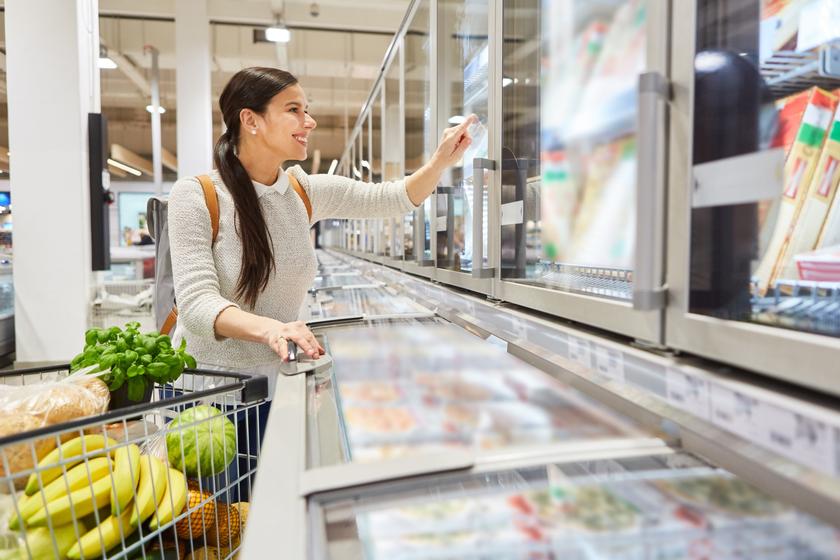How Ultra-Processed Foods Harm Your Health (& Examples of What Counts)

It's no secret that the Standard American Diet, aptly abbreviated as the SAD diet, is problematic for our health.
Many of the foods available today are convenient, cheap and really tasty, but they're also processed — often full of additives and preservatives that detract from the nutritional value of food instead of enhancing it.
"Processed" is a general term, though. It can mean many things, ranging from minimally processed to ultra-processed and everything in between. Not all foods that undergo processing harm our health, so some initial clarification is in order.
"Minimally processed foods include things like pasteurized milk and vacuum-packaged fish," says Kelly Gaines, a dietitian at Houston Methodist. "There's processing required, but it's minimal and doesn't impact the nutritional quality of these foods in any significant way."
On the other end of the spectrum are ultra-processed foods, which are highly processed and, when eaten frequently and in excess, can harm our health. What's more, these foods are abundant in our diets.
"Estimates suggest that about 50% of the average American's energy intake is coming from ultra-processed foods right now," says Gaines. "I don't think it's realistic to say that we shouldn't ever eat these foods, but the more we can cut back, the better for our health."
What are ultra-processed foods?
What does it mean for food to be highly processed? Gaines explains it as taking whole foods, extracting their ingredients into individual components and creating a new food item from some of those components — usually the ones that taste the best. You're not alone if this sounds like something out Mary Shelley's Frankenstein.
Many of the sweet and savory packaged items found in the snack and dessert aisles are perhaps predictable offenders, but certain other items that make the list of ultra-processed foods might surprise you.
"Many of these foods are ones you'll find in the freezer section, those ready-to-heat frozen foods," warns Gaines. "This includes meatless burger patties, by the way. I single those out because a lot of people think of them as being healthy, when in reality they're highly processed."
Examples of ultra-processed foods include:
- Candy
- Chips, crackers and pretzels
- Cookies
- Deli meat
- Hot dogs and sausages
- Frozen TV dinners, pizzas, lasagnas, fish sticks, chicken nuggets and burger patties
- Sugary breakfast cereals
- Soft drinks
Processed vs. ultra-processed: What's the difference?
Ok, so that's the difference between minimally processed and ultra processed. But what about the processed foods that fall in between?
"Whereas ultra-processed items significantly differ from the original product, processed foods are ones that are still whole foods but have salt, sugar or fat added to them," explains Gaines. "This is often done to make them taste better but is also sometimes just to make the product more shelf stable."
For instance, canned vegetables and canned tuna are considered processed foods since salt water or oil are used as preservatives, respectively. Fruit cups are also processed since they're preserved in syrups.
Perhaps less surprising than the examples above, bacon is considered processed because it's cured and smoked.
Back to the snack aisle, pre-popped popcorn is an example of a food that's somewhat processed but not to the point of being ultra-processed — making it a healthier option when you're looking for something to snack on between meals.
"It's whole corn, but it's been popped, and then butter or oil, salt and sugar are usually then added to it," explains Gaines. "Some tortilla chips are now also made from whole corn, making them processed but not ultra-processed."
On the flip side, snack options you may think are healthy can actually be highly processed, like pretzels. Sure, wheat was used at some point, but only after being ground up so the less healthy components could be extracted and used.
"You've lost the parts of the wheat that include the fiber, vitamins and minerals — the healthy components," says Gaines. "Then, added to this are things like extra gluten, salt, sweeteners and other preservatives, which is all mixed together and shaped into a whole new food."
Why ultra-processed foods are ultra-bad
Central to the problem with ultra-processed foods is the fact that the nutritional quality is dramatically affected.
"We've lost the majority of the good ingredients," says Gaines. "We end up with this food that's high in sugar, salt and fat — things that make it taste amazing. But we've lost the fiber, protein, vitamins, minerals and antioxidants that are beneficial to our health."
Not only are these foods devoid of nutrition, the added sugars, saturated fats and excess salt harm our health. When we're looking at what ultra-processed foods do to your body, it's nothing good.
"Foods high in salt are an issue for people struggling to control their blood pressure," says Gaines. "Ones high in added sugars are a problem for people with prediabetes or type 2 diabetes."
Over time, eating these foods in excess can also contribute to the development of these health issues, not to mention weight gain. And there's more. Highly processed meats, like hot dogs and deli meat — as well as other options that are only somewhat processed, like bacon — are linked to increased risk of certain cancers, including colorectal cancer.
(Related: Are Your Taste Buds Sabotaging You From Eating Healthier?)
"And animal studies show that some of the ingredients in ultra-processed foods can affect the gut microbiome, promoting low grade inflammation that can contribute to a number of chronic health conditions over time," adds Gaines.
Given this, Gaines says the best thing to do is limit the amount of ultra-processed foods you eat, prioritizing unprocessed foods as often as possible, food like whole grains, vegetables, fruits, beans and legumes, nuts and seeds, herbs and spices, seafood and lean cuts of meat.
Tips for prioritizing unprocessed foods
With half of the average American's food supply coming from ultra-processed foods these days, cleaning up your diet might sound daunting. Fortunately, Gaines has tips for prioritizing unprocessed foods and cutting back on ultra-processed ones:
1. Set a realistic goal for cutting back
"Avoiding ultra-processed foods altogether might be ideal from a health standpoint, but it isn't realistic," says Gaines. "Instead, start by moving more of your diet toward foods that are only somewhat processed or, better still, minimally processed."
How much of a shift is enough? Gaines adds that even a small reduction in ultra-processed foods comes with benefits.
"This is where we need to take a step back and think about how much of these foods you're eating right now," explains Gaines. "The average is 50% of a person's diet, but the actual amount can be more — all the way up to 90% or more for some people. Even reducing that amount by around 1/4 would be fantastic."
And for people whose diet is only about 25% ultra-processed foods, cutting back even further comes with more health benefit.
"The less ultra-processed foods you eat, the better," adds Gaines. "Do what's realistic for you, but the more you can cut back, the greater improvement on your health."
2. Look at the expiration date
Familiarizing yourself with the list of ultra-processed foods above is a good start, but you might still question whether specific items you enjoy fit into those categories.
It's not a perfect guide, but one of the best ways to tell if a food is ultra-processed is to consider how long it can last on a shelf. If the expiration date is months to years in the future, that's usually a sign it's ultra-processed.
"There are exceptions to this rule — like canned and frozen vegetables and fruits, pre-popped popcorn, unsalted nuts, for instance — but it's often a good starting point to work from," adds Gaines.
3. Stick to the outer perimeter of the grocery store
Another way to help reduce your intake of ultra-processed foods is to shop the perimeter of the grocery, avoiding the inner aisle when possible.
"Whereas the perimeter of the store contains a lot of whole, fresh foods, the inner aisles contain foods that can last a long time on the shelf," says Gaines. "The more shelf-stable something is, the more processing it has typically gone through."
This isn't a perfect rule. Hot dogs and deli meats — examples of ultra-processed meats — are found on the outer perimeter of the grocery store. The opposite is true, too — minimally processed or only somewhat processed foods can be found in the inner aisles. This is where Gaines' next tip comes in handy.
4. When in doubt: The fewer ingredients, the better
Another simple trick Gaines recommends for sussing out ultra-processed food items: Check the ingredients list.
"Fresh, whole foods won't have a label, but everything that's processed and packaged will," says Gaines. "Take a look at the ingredients and pay attention to how many you see."
The more whole the food is, the fewer ingredients there will be on the label. Gaines points out that minimally processed and less processed foods will only have two or three ingredients.
"For instance, a can of green beans should just be the green beans, water and salt, right? That's processed, but not ultra-processed — making it a better choice," explains Gaines. "Ultra-processed foods often have a long list of ingredients, so that can be a really telling clue."
And don't let label claims like "Natural" or "Organic" fool you into thinking an item isn't processed. For starters, Gaines points out that natural doesn't actually have a standardized meaning. Organic does, but this claim relates to how the crops or meat that went into the product were grown or raised prior to processing. Not whether (or how much) the food was processed.
"You can absolutely have a 'Natural' or 'Organic' product sitting in your grocery cart that's ultra-processed," warns Gaines.
5. Know that less processed foods can still be convenient options
Besides irresistible flavor, two other draws of ultra-processed foods are that they seem like the cheapest and most convenient choice — factors that are often priorities in our costly, fast-paced lives.
But this isn't necessarily the case.
"If we're still needing convenience and trying to limit cost, let's go to the canned aisle and get canned vegetables or fruit cups," says Gaines. "These are less processed than ultra-processed sides, like instant mashed potatoes, or snacks. Certain aisles of the freezer section are good, too. Frozen vegetables and fruits — ones that don't have any added sauces — are even considered minimally processed, making them an even better choice."
Heat canned green beans on the stove. Steam a frozen veggie medley in your microwave. Toss frozen fruits into a smoothie or add them on top of Greek yogurt. Buy a rotisserie chicken and slice it yourself for less processed sandwich meat. There are plenty of ways to avoid ultra-processed meals, sides and snacks without 20 minutes of chopping and standing over the stove.

















